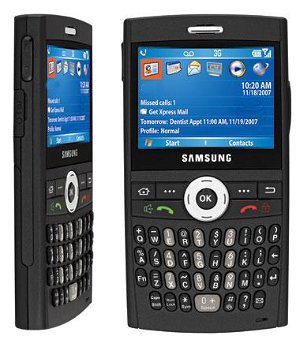Woohoo! I am back in Gainesville. Although I liked being in the city, I missed my nice house, clean garage, and quiet neighborhood right on top of law school. I had such a fulfilling experience in Orlando. I saved up the money I needed to save up, met judges, attorneys, businesspeople, made new friends, got my kickboxing training on, and most of all gained work experience. The only thing missing is motorsports. I did not get to do any of such! I had originally wanted to rent a kart but life caught up to me and couldn't spare the time or money.
I did read a racing related book: Perry McCarthy's Flat Out, Flat Broke; Formula One The Hard Way. This is an autobiography of Perry McCarthy's racing life. He has a nack of making thing happen and his networking skills were no doubt important in making his career possible. It was a very inspiring book and it fueled my desire to network, so it actually helped me get out there and meet even more people. In my typical do-or-die fashion when it comes to finding jobs, I left my resume everywhere and shook hands with as many people as I could. My father said face time is key in success, and I adhered to it the best I could. We will see what happens as the years go by. A couple of attorneys even asked me to give them a call when it is time for me to graduate!
I know the title sounds grand but what I want in my life in the short term is actually pretty simple. I don't have grand, all-encompassing long term goals. I am constantly thinking about these things, too. It is what fuels my life: If I have something I want I can't stop thinking about it until I get it. A girl, a car, a new pet, a job, you name it. And boy will I get it. If you remember, I wanted a
koi fish pond. That dream hasn't changed and my koi fish are doing fine in their 30 gallon plastic tub. When I move them to a pond, I hope they grow to be behemoths.
This time, I am thinking about what car to get when I get my first job. This is what I want in life. My needs are very simple; cheap, seat time, reliable. I've decided to add two more criteria, which shall surface in my writing as you read on. My first car was a Ford Focus that I wrecked several months into driving. I didn't know anything about cars so that doesn't count in what I am about to explain. Subsequently, I've owned a Miata, a truck, two motorcycles, and another Miata. I never owned more than one; the vehicle was my daily driver/rider. My first Miata was a 99 which I drove 2006. Truck was a 90, which I owned in 2008. My first motorcycle was designed in 1986, and my second bike was designed in 89. My current Miata is a 92 and has no air-conditioning, power steering, and has stiff springs and a race seat. Do you see a trend? Although, most of the year I get to drive my girlfriend's car which is quite comfortable.

So I'm sick and tired of driving uncomfortable, old and beat up cars. But I can't bring myself to make the horrible investment of buying a newer car. I've thought about buying a Hyundai Genesis; RWD, 3000 lbs, 200 horsepower and an LSD for 24k! I've thought about buying an E36 M3. Or a used NSX--my friend Walter got me to fall in love with these cars when he showed me his when I was twenty years old. All great, awesome cars. But still, how will I feel when I bend a control arm hitting a curb on the track? How much will it cost? I can't bring myself to drive a nice car like that. Besides, I've really wanted to start taking my girlfriend and the dog on a camping trip somewhere remote; what better than a 4x4 to do that? This is the Josh Neubauer influence.

Besides, nothing really beats karting in terms of experience vs money ratio. My first day on a racing kart was on a KPP (Komer Piston Port, formerly HPV) kart at the old Moran kart circuit. It was an amazing circuit with elevation changes, and I got to do it for 50 minutes. I almost cried. I am not kidding when I say this was one of the most memorable experiences of my life, right up there with when I got 4th place in my MMA tournament. Impressions like that don't go away easily, and in the back of my head I can still smell the strong stench of burnt castor oil and feel the two stroke engine rattling my body. Oh and the sensation of the tires scraping the tarmac. It felt so direct and how can one forget that. If I can find the time to race my kart once or twice a year, it would keep me very happy.
So instead of doing schoolwork, I spent hours researching what SUV to buy. I finally figured out the perfect balance of all the things I need. I wanted a car less than 10 years old for once which has a real audio system and air conditioning. Also, it had to be a real 4x4, that can "go anywhere" as Josh says. A Jeep rubicon might have done it but that is too expensive and gets absolutely horrible gas mileage. I do not understand why that doesn't come in diesel! I've thought of Samurais and Trackers but those are too old.

But I found it; 1999-2005 Suzuki Grand Vitara, the last japanese SUV that is imported to America that is was properly designed to go off-road. I really don't need that much in creature comforts and with a locker and a set of appropriate tires, this little SUV should "go anywhere" including work and grocery stores. I'll probably get a winch, portable tools, some lights and a roof rack to turn my urban attack vehicle into a capable camp-mobile. Plus, it will have no problem hauling my kart trailer, even if I load two karts on it.
Okay, enough ranting. So I can make these dreams come true, I am in the process of trying out for a journal in law school. Having been on an academic journal really boosts your resume. I've been procrastinating a bit but I am going back to writing this case-comment for the write-on competition. I've been working on this paper all week.
All of these things will come true and please keep track of me as I make this happen!
Oh, and in case you were wondering, yes I am going to continue developing my Miata.
Photo Credits: Photo 1: owned by Josh Neubauer in one of his 4 wheeling trips; I'm actually not even in the picture nor was I there for the trip. Photo 2: my very first day on a racing kart at Moran Raceway. This may sound cheesey but it was absolutely the drive of my LIFE. Photo 3: 2005 Suzuki Grand Vitara. Photo 4: A lucky photo of me proving that I actually used to race a kart. For a hilariously short period of time. I will be back though! Yes that is me.









































